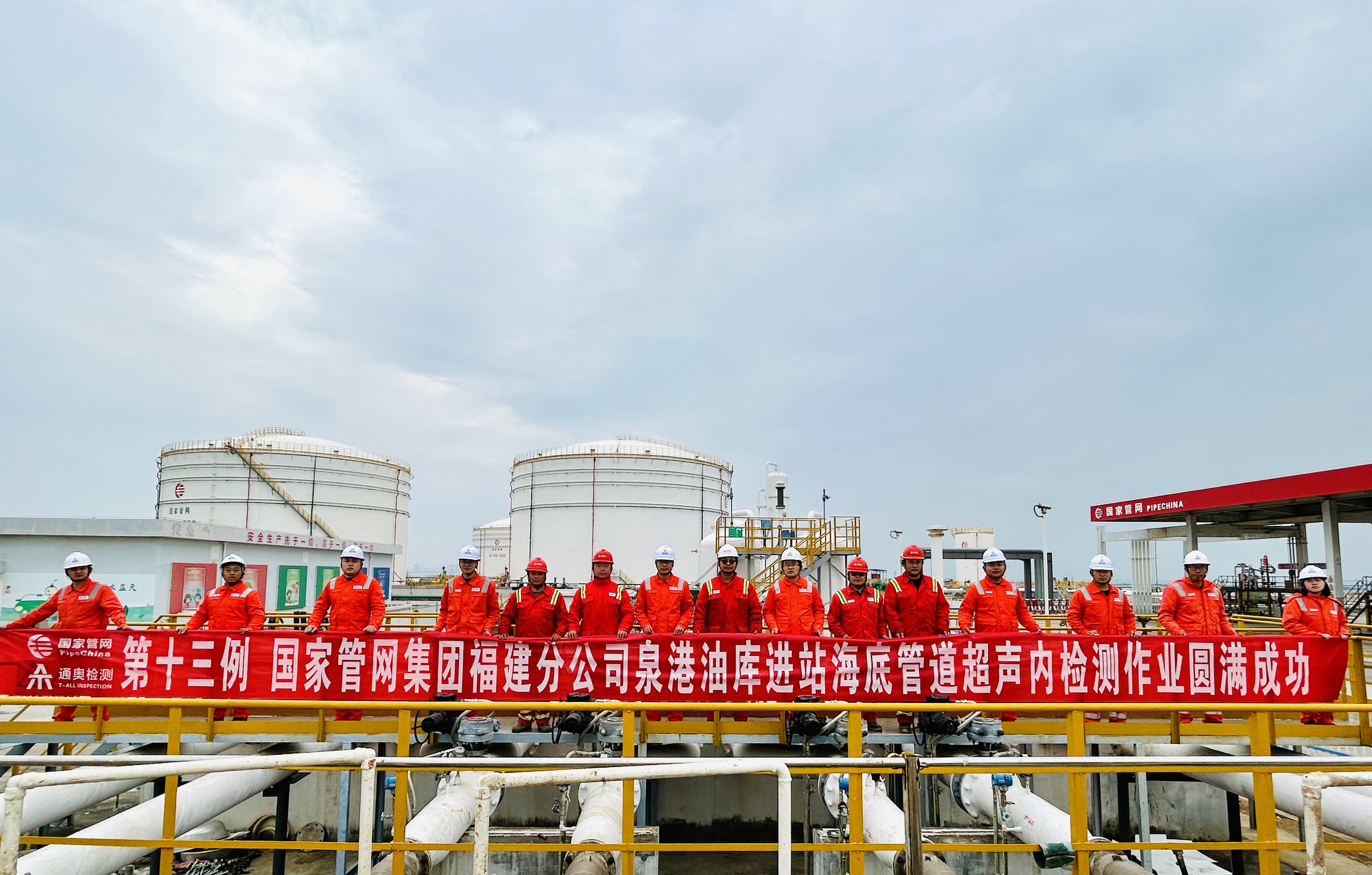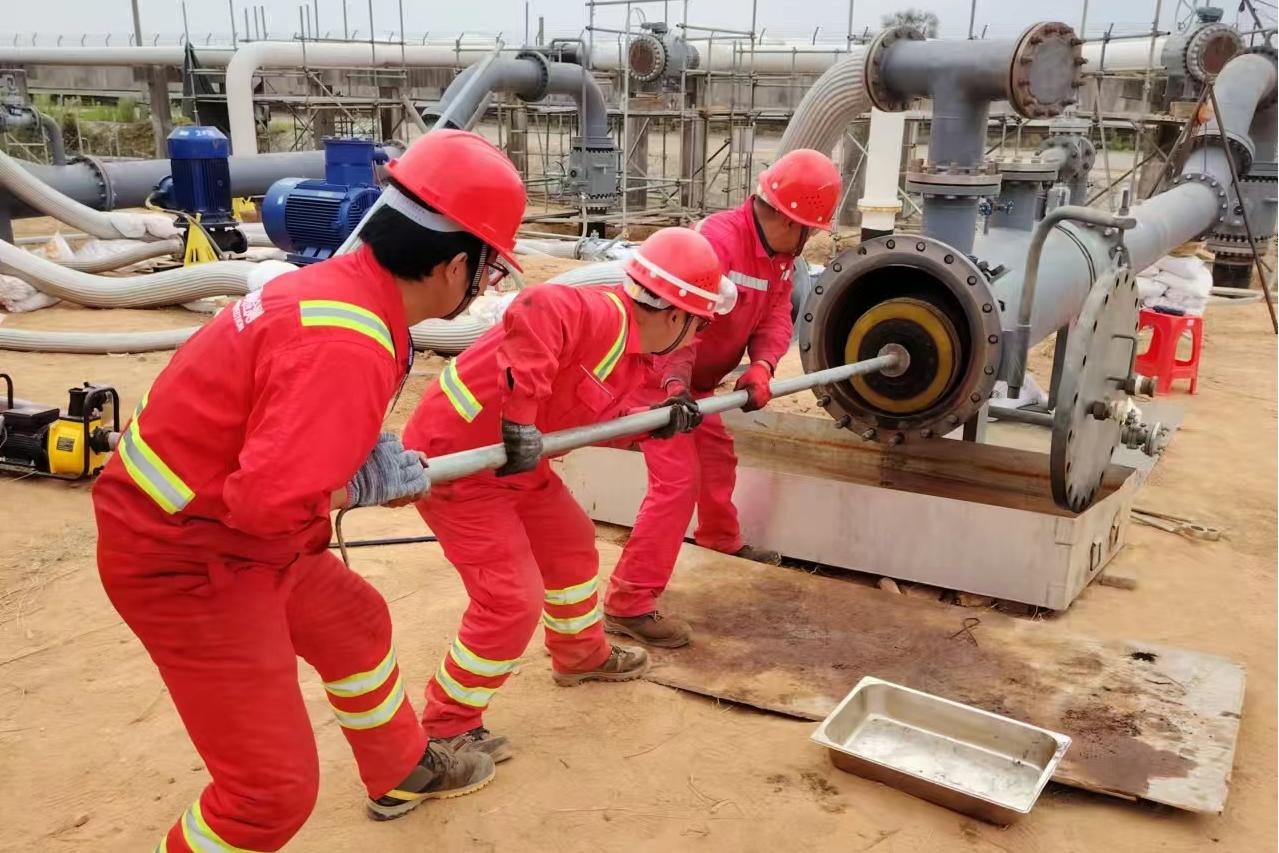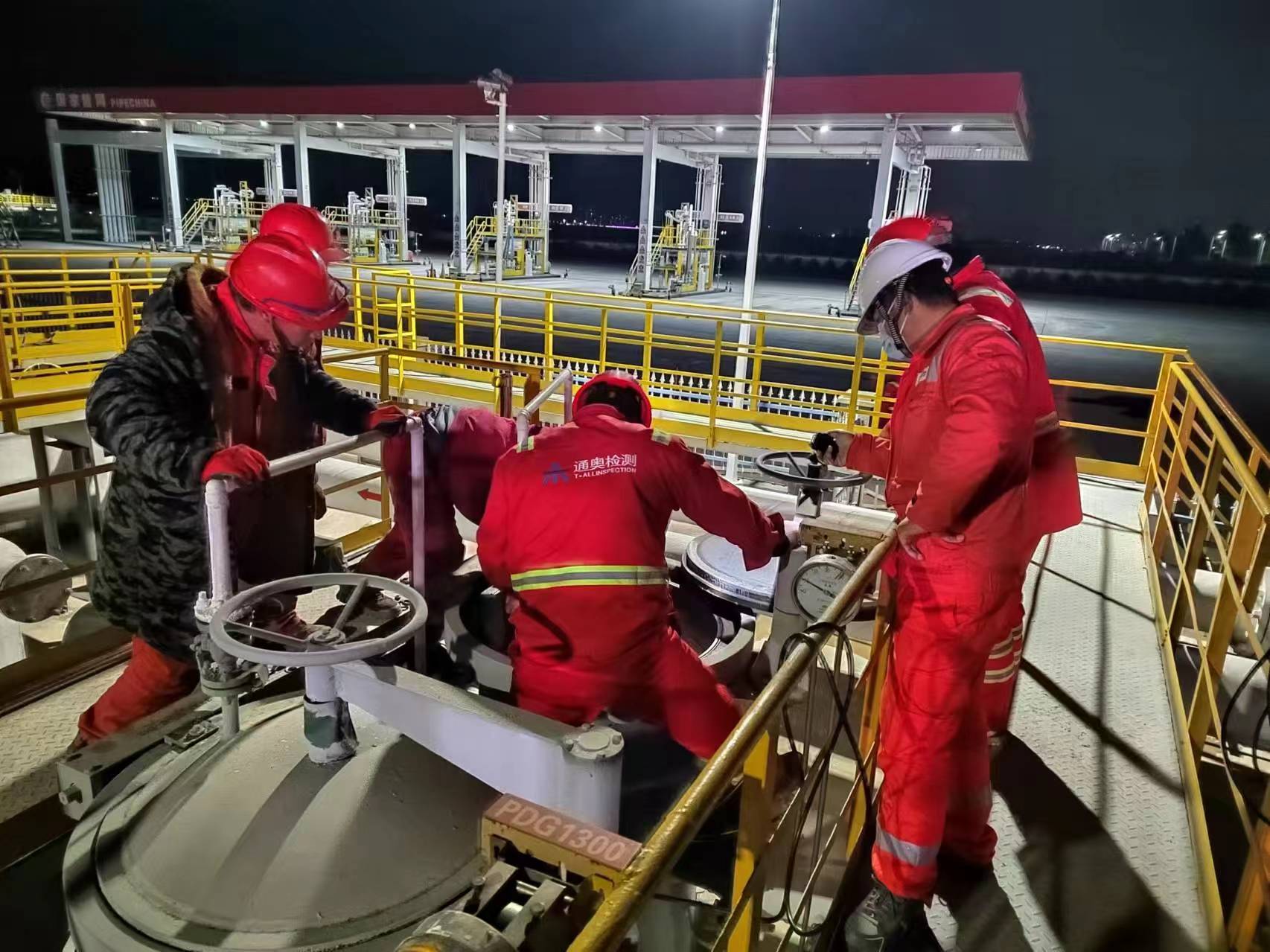
On January 20, 2025, the T-ALL Inspection team successfully retrieved the inspector from the subsea pipelines of the Quangang Oil Depot. Confirmed by on-site engineers, the inspector's probe was intact, and the inspection data was complete and valid. This marked the successful completion of the baseline inspection of the subsea pipelines at the Quangang Oil Depot by Fujian Branch of the National Pipeline Network Company, which was also the thirteenth ultrasonic internal inspection project undertaken by T-ALL Inspection. To date, the company has provided ultrasonic internal pipeline inspection services for 33 pipelines for the National Pipeline Network.
The subsea pipelines entering the Quangang Oil Depot were commissioned in 2011, with a diameter of φ457×9.5mm and four parallel lines, designed for a pressure of 9.5MPa. The transmitted media include gasoline, diesel, and aviation kerosene, without pig launcher and receiver. Due to the pipelines having been in operation for many years, their passability and impurity conditions were unknown, and the cross-sea sections could not be tracked, posing challenges for this internal inspection.
For the baseline inspection of the subsea pipelines entering the Quangang Oil Depot, the 92# gasoline pipeline and 95# gasoline pipeline were connected in series for internal inspection, and similarly, the diesel pipeline and aviation kerosene pipeline were connected in series. Pig launching and receiving were conducted at the Liyuwei Wharf. The inspection work mainly included process modification (at Quangang Oil Depot and Liyuwei Wharf), pipeline pigging, pipeline inspection, and process restoration. Process modification needed to be carried out during pipeline shutdown, while the inspection was conducted using the pumping system after process modification.
Key Challenges in This Inspection:
Water was used as the inspection medium this time. Impurities, oil, and water inside the pipeline combined during pigging, generating a large amount of suspended matter that was difficult to filter.
There were two diameter reductions in the underground pipelines at the Quangang Oil Depot end, making it impossible to clean two pipelines simultaneously. Pigs could not pass through the connected sections of the pipelines to be inspected, and it was difficult to completely clean the diameter reduction sections and dead-end sections of the pipelines.
The underground pipeline route at the Quangang Oil Depot end was unknown, posing a high risk of pigging blockage.
Long uphill sections existed at the pipeline's entry and exit points under the sea, with a maximum elevation difference of about 30 meters.
Responses to Challenges:
For the suspended matter, oil sludge, and ferromagnetic impurities generated during pigging, foam pigs, straight-plate pigs, and steel brush pigs were first used to clean the oil sludge and ferromagnetic impurities in the pipeline. For the suspended matter that could not be cleaned, on-site process modification was implemented to use fire water to push the pig and displace sewage in the pipeline and temporary storage tanks.
For pigging work at the diameter reduction sections of the underground pipelines and ground pipelines at the Quangang Oil Depot, after pigging the main pipeline, the pig was stopped at the first diameter reduction section. Process modification was then conducted to form a circulatory system in the pipeline ahead of the pig, into which fire water was injected to clean impurities inside the pipeline.
For the risk of pipeline blockage, excavation was conducted for confirmation and process modification. Once the pig reached the diameter reduction section, the flow could be switched for reverse transmission.
For the long uphill sections and large elevation differences in the pipeline, the on-site pumping system was modified to increase the delivery flow rate and pressure. The operating speed of pigs and inspectors was adjusted in real-time, and the pig structure was adjusted based on each operation to avoid blockage.


During this inspection, T-ALL Inspection collaborated closely with the Fujian Branch, continuously innovating based on past experience. The pipeline operating pressure, flow rate, pump speed, and other data were monitored and adjusted in real-time to ascertain pipeline conditions. Ultimately, the inspector was successfully operated, ensuring complete and valid inspection data, and accumulating valuable field experience for subsequent similar projects.